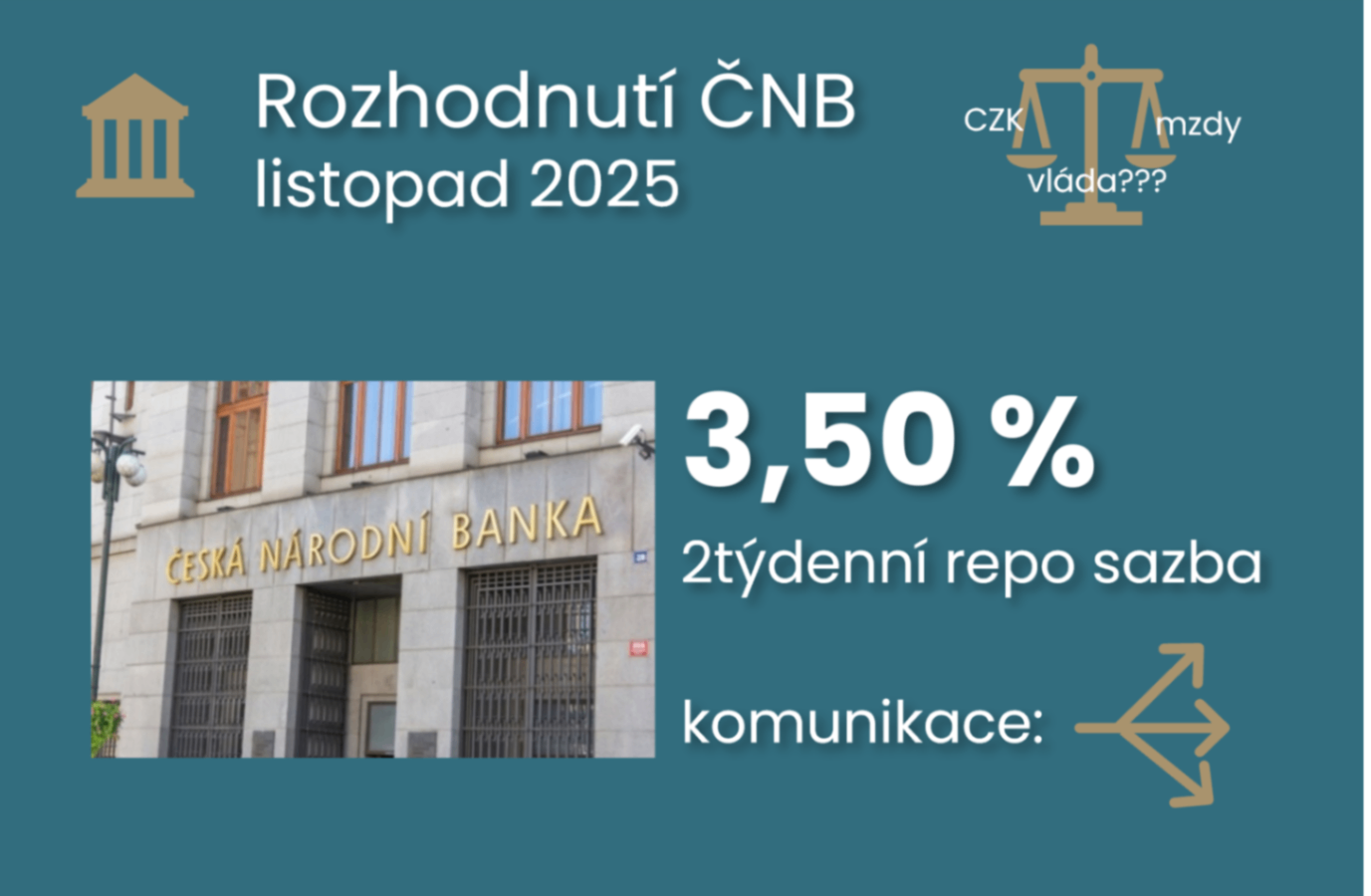Tighter monetary conditions left the CNB's options open. The CNB's new forecast paves the way for more cautious communication in the rest of the year
Comment by Jaromír Šindel, Chief Economist of the CBA: The CNB is waiting for a new impulse. The CNB is waiting for the new government to announce its plans, both from the data and from future analysis of the new government's upcoming plans. The CNB's own outlook, with more moderate consumer price growth at the end of the year and a stronger economy in real terms in Q3, opens up the possibility of more hawkish communication in the rest of the year. But I believe the CNB will wait to reassess its communication until the contours of the new government's policy are clearer.

The CNB has left the interest rate unchanged at 3.5%, unchanged since the last cut in May 2025. Its communication leaves all options open for the direction of the interest rate, reflecting the apparent risks in the economy and in light of the election result (whose impact I discussed here). Strong wage and unit labour cost growth in the second quarter has tightened the outlook for monetary conditions next year by around half a percentage point, due to the stronger crown but also the interest rate outlook itself.
The outlook for 3M PRIBOR has moved up by around 0.2% points, which remains consistent with a 3.5% interest rate for both the rest of this year and the first three quarters of next year. For the end of 2026, the CNB's forecast assumes an increase in the interest rate to 3.75%, which should persist in 2027. However, postponing ETS2 by a year risks a more modest increase of around 0.1% point, leaving the interest rate unchanged over the next year.
In the coming weeks, the details of the government's programme will be key for the CNB and its communication, and the calendar will bring the following key data: core service prices (11 November), the CNB's Financial Stability Decision (27 November), the CNB's Financial Stability Decision (27 November), and the CNB's decision on the Financial Stability Decision (27 November). November), the composition of stronger productivity and the impact on unit labor costs in Q3 (November 28), Q3 wages (December 4; industrial wages continued strong with 1.5% QoQ growth in Q3), core services prices (December 10, when the Fed will also meet).
New CNB's forecast
CNB's new forecast:In line with expectations, the CNB's new forecast predicts softer GDP growth in 2026, at 2.4% year-on-year after 2.3% growth this year. This is accompanied by a 2.2% outlook for consumer price growth next year after 2.5% growth this year. This is in line with my expectations. However, the forecast itself paves the way for more cautious communication in the rest of the year.
First, stronger GDP growth in Q3 may imply a stronger cyclical position for the economy than the CNB expects. GDP expansion was half a percent stronger: 0.7% qoq vs. the CNB's 0.2% forecast. And since the CNB expects a return to stronger growth of 0.6-0.7% qoq in the future, the currently stronger growth implies a half a percent stronger cyclical position of the economy, which may indicate a risk of stronger inflationary pressures from the labour market. This risk may be dampened by stronger productivity growth in Q3.
Second, likely slightly higher inflation at the end of the year will cool dovish sentiment. The CNB expects more moderate consumer price growth of around 2.2%-2.3% for the rest of the year, which is less likely given the October return to 2.5% growth. I expect CPI growth of around 2.5% in the last two months of this year. However, the CNB indicates that core inflation "will remain elevated in the coming quarters". In October, my estimate from the preliminary numbers is that it was slightly below 2.8%.
Third, the CNB now expects a stronger koruna against the EUR, around 24.4-24.5 at the turn of this year and next. Thus, the disinflation risk from a stronger koruna should not be as strong, given its current level, compared to the previous forecast, which envisaged a koruna 50 pence weaker in this period. The CNB expects the koruna to be 1.3% stronger against the euro on average over the next two years, helping to offset the necessary rise in interest rates due to recent inflationary wage growth.
Stronger wage and ULC dynamics in Q2 behind the CNB's tighter outlok
... and the economy increased more in Q3